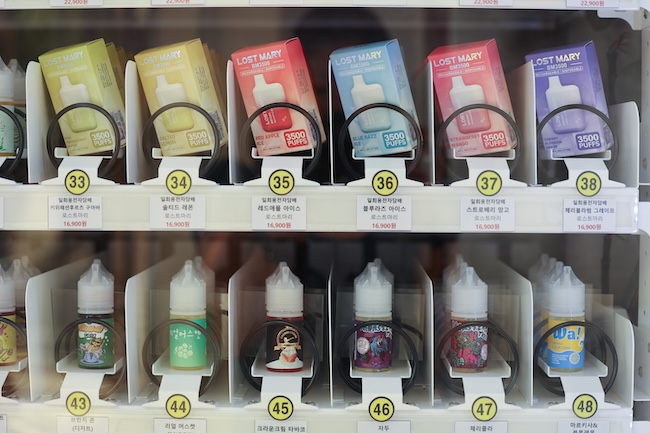
South Korean lawmakers are pushing for legislation that would require warning labels and images on electronic cigarette devices. (Image courtesy of Yonhap)
SEOUL, Nov. 26 (Korea Bizwire) – South Korean lawmakers are pushing for legislation that would require warning labels and images on electronic cigarette devices, addressing a regulatory blind spot in the nation’s tobacco control measures.
The bill, recently introduced by Representative Jeon Jin-sook of the Democratic Party, aims to expand current regulations that mandate health warnings only on cigarette packaging. The Ministry of Health and Welfare has expressed support for the initiative, acknowledging the need to raise awareness about smoking hazards across all delivery systems.
“Warning labels need to be displayed on e-cigarette devices to heighten awareness of smoking’s harmful effects,” the ministry stated in a written response to a parliamentary audit, pledging to support the legislative reform.
The proposed amendment to the National Health Promotion Act would require presidential decree-mandated warning images and text on both e-cigarettes and their associated devices. It would also restrict advertising that might appeal to youth, prohibiting the use of animal photos, characters, or figures from cartoons and movies.
The legislative push comes as e-cigarettes proliferate in a regulatory vacuum. While traditional cigarettes and heated tobacco products are strictly regulated, liquid-type e-cigarettes often escape oversight due to legal definitions that only cover products made with tobacco leaves.
This loophole has created a situation where synthetic nicotine-based products can be sold both online and offline without age restrictions, warning labels, or tobacco consumption taxes. Their devices can be designed to avoid resembling traditional tobacco products, potentially increasing their appeal to young users.
The consequences of this regulatory gap are becoming apparent. According to the Korea Disease Control and Prevention Agency, e-cigarette usage among middle and high school students increased from 2.7% in 2018 to 3.1% in 2023. More alarming, a July youth health panel study revealed that over 60% of students who initiated nicotine use with liquid e-cigarettes later transitioned to conventional cigarettes.
Under current law, tobacco products are defined as items manufactured for smoking, sucking, inhaling as vapor, chewing, or smelling, using tobacco leaves as all or part of their raw materials. This definition, shared by both the National Health Promotion Act and the Tobacco Business Act, leaves products using tobacco stems, roots, or synthetic nicotine outside regulatory scope.
M. H. Lee (mhlee@koreabizwire.com)






